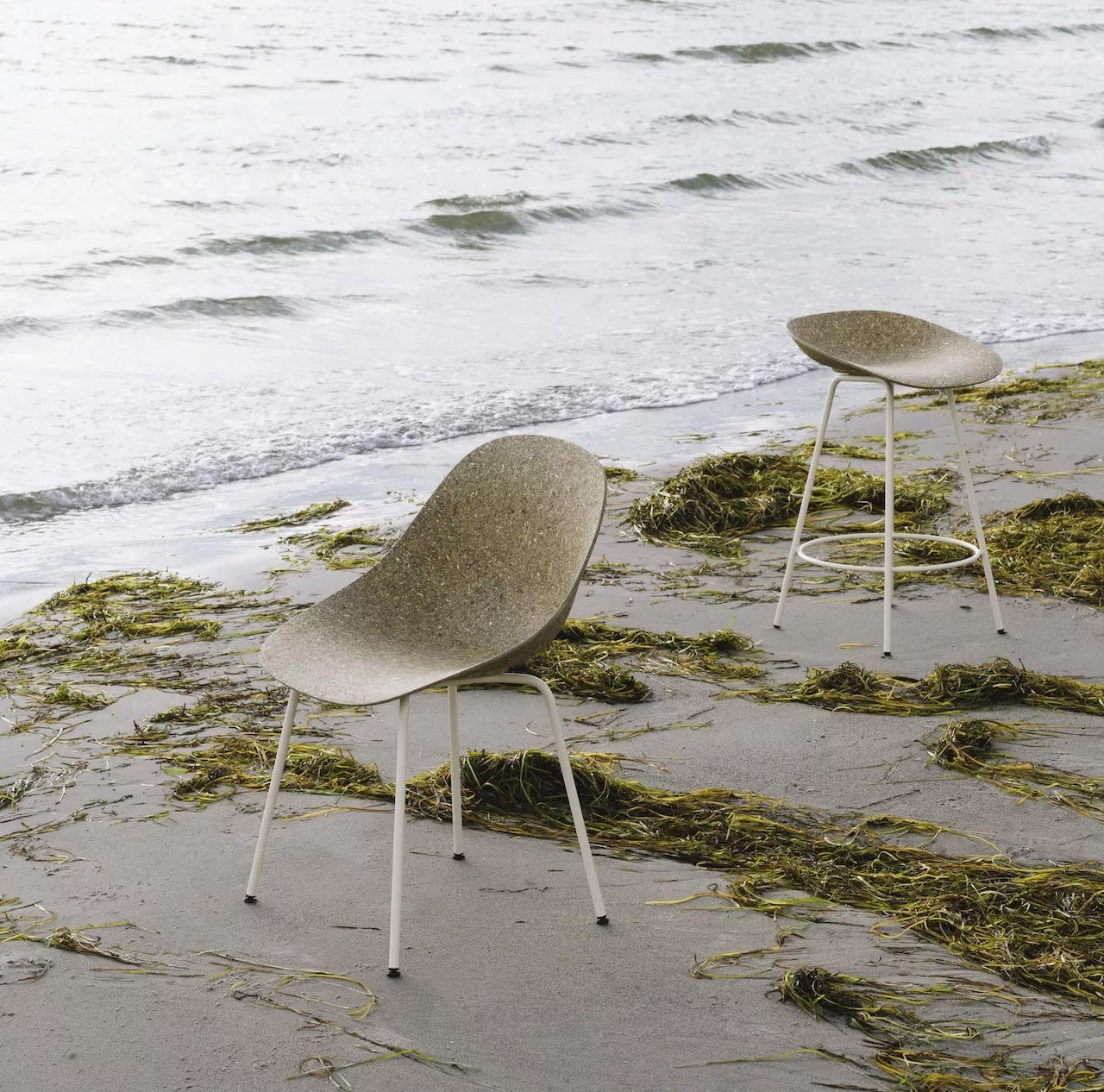More furniture and textile makers make sustainability a top priority.
If there’s one message that came out of the flurry of recent design shows, it’s that sustainability is not going anywhere. In fact, it’s on the rise.
“Sustainability was a theme this year, instead of an emerging trend,” says Dianne Murata, founder of Kimiko Designs, a consulting firm specializing in commercial furniture specification and project management.
The eco-friendly furniture market is on the rise and is expected to grow 8.6% each year, up from $43.2 billion in 2022, according to Grand View Research. And when it comes to the office, sustainability has shifted from being a trend to being an essential expectation. A 2022 survey by Swedish health company Essity found that 83% of employees want to see a more environmentally friendly office. At least three-quarters of those workers said they’re prioritizing a company’s sustainability reputation and actions when looking for a new job.
This focus on the environment was clear at the recent NeoCon, Design Days and ICFF design conferences, which put sustainability on display, demonstrating companies’ commitments to the environment.
There is still a lack of common language and transparency around sustainable product claims and certifications. To help people sort through sustainability options, Murata’s team started an offshoot called kimiko green designed to assist leaders in sustainable furniture planning, design and decommissioning of offices. Kimiko green held a June webinar on sustainability design trends—one of 17 green roundtables it has organized– and released its second playbook on sustainable furniture planning and procurement. Last year, it released its first playbook, a practical guide to sustainable furniture decommissioning.
Kimiko green’s community of 250 facilities professionals share best practices and gain insights for more sustainable furniture practices through in-depth research and creative business cases. “Our community is growing faster than we could have ever imagined, and I’m inspired by what the future holds.”
In its webinar, kimiko green highlighted some of those innovative, eco-friendly furniture and design trends and the companies that are changing the way the industry thinks about sustainability. Here are a few companies to watch:
Textile Companies Ditch the Toxins
More textile companies are starting to eliminate the toxins commonly found in treated materials such as antimicrobial properties, waterproofing, stain resistance and flame-retardants. They’re instead incorporating bio-based materials and recycled content.

Chicago-based Luum Textiles, for instance, released some new textiles that are not only toxin free but are also biodegradable at the end of their lives. Another company, Momentum Textiles and Wallcoverings introduced Circon, a wallcovering substrate that’s bio-sourced and carbon-neutral with no phthalates, heavy metals, formaldehyde or halogenated flame retardants. The textile also uses algae-like materials and is 100% recyclable.
Today, only about 25% of the textiles that can be recycled are actually being recycled. “By designing biodegradable textiles, it reduces the number of materials sitting in a landfill for decades,” Murata says.
Eelgrass, Bamboo and Recycled Furniture
Textile companies are also embracing recycled and biodegradable materials. Midwestern textile maker CF Stinson has a new fabric line called Sea Change with a patent yarn for woven fabrics called Seaquel, made from 100% post-consumer recycled polyester. The company is collecting plastic from beaches, coastlines, the ocean’s surface and the ocean’s floor, rivers, and estuaries. It is then converted into yarn that is almost identical to virgin polyester. Similarly, textile company DesignTex has a “Loop to Loop” program that transforms textile waste into new fabric that can be used to create new products.
Frovi Furniture uses bamboo across their product lines, which is carbon negative material, renewable and antimicrobial. They used recycled ocean plastics for laptop tables and bookcase connectors. The company has also created sustainable packaging, made of 80% recyclable cardboard.
Norman Copenhagen partnered with Allsteel to introduce the Mat Chair which leverages steel crafted using renewable, durable materials of hemp and eelgrass, a type of seaweed. The chair won the 2024 Metropolis award given for architecture, design, and ministry that promotes a regenerative and equitable future.

Canadian furniture maker Keilhauer launched four new carbon-neutral lounge chairs that won a best of NeoCon award for sustainability. It incorporated sustainably sourced materials, responsible manufacturing and a carefully planned end-of-life and recyclability plan to offset carbon emissions. Italian furniture company Arper created Catifa Carta, a chair that it says can sequester carbon dioxide. It’s made from a new composite material from paper and a natural resin binder that aims to be circular.
Setting High Standards for Sustainability
Carpet and tile maker Interface has set a high standard with its commitment to sustainability in all of its products, focusing on carbon reduction and carbon storage. It uses 89% renewable energy in its manufacturing and uses renewable or recycled materials. Interface has been collecting carpet that would otherwise end up in landfills and using it to create new carpet products.

Spanish furniture manufacturer Andreu World received Cradle-to-Cradle certification on 2,000 chairs and tables that can all be easily disassembled and reusable for a second life—made from recycled and recyclable plastics. And it recently launched the Circular Design Challenge, which challenges manufacturers to adopt practices such as eco design, zero waste management, carbon neutral footprints and the selection of sustainable materials. It’s not only good for the environment but for human health and wellbeing. “It’s a call to action for the entire industry,” says Murata.
Ultimately, our “take-make-dispose” model is unsustainable. Circular design will be crucial for the health and wellness of people inside offices and for the survival of the planet. Keeping the momentum going toward that future will require collaboration and a unified voice from the industry, says Murata. “Together we can drive change in the industry to make it better, not just for us, but our kids and our grandkids.”
